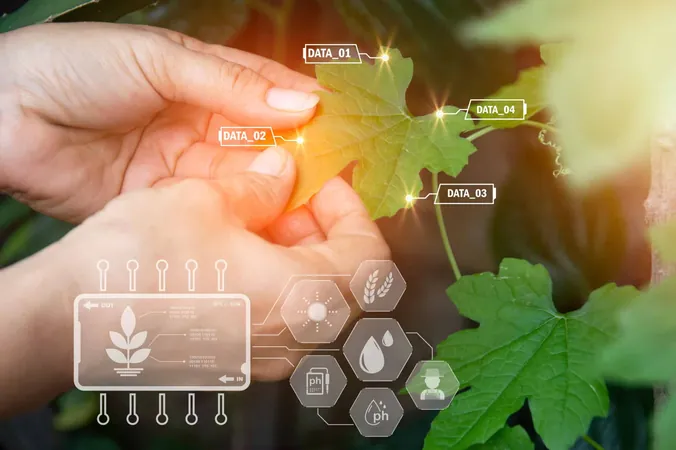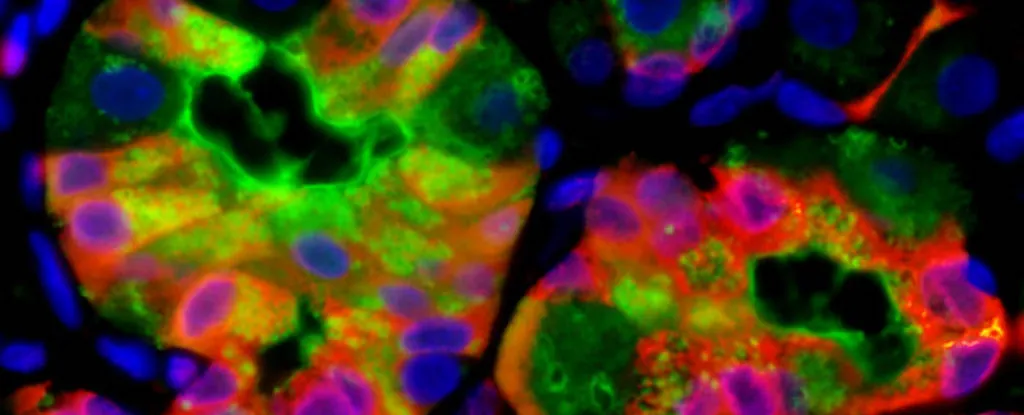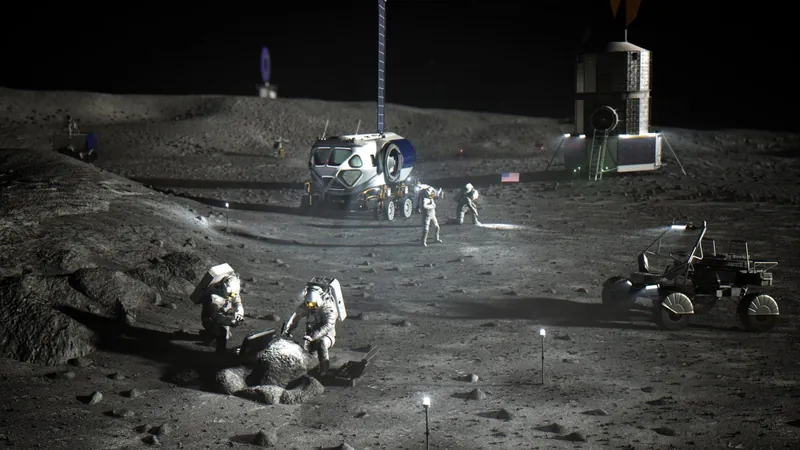
Revolutionizing Agriculture: The Smart Robot Set to Transform Crop Science
2025-09-12
Author: William
Introducing the Future of Farming
Imagine a new era in agriculture, where precision-engineered robots are on the frontlines, optimizing plant growth and enhancing crop yields. A groundbreaking phenotyping robot, equipped with an adjustable wheel track, advanced sensor gimbals, and state-of-the-art multi-sensor fusion algorithms, is set to change the game in plant science!
Tackling Global Food Challenges
As the world grapples with rising food demands, improving crop genetics has become paramount. However, there remains a significant gap between genomic research and the practical traits observable in crops. Enter plant phenomics, the large-scale exploration of plant traits, which stands ready to bridge this divide.
Why Traditional Methods Fall Short
Conventional methods of capturing crucial traits like plant structure and physiology are often slow and laborious. High-throughput phenotyping (HTP) aims to revolutionize this field with mobile systems and automated data collection. While aerial systems can cover vast areas, they face limitations in payload and endurance. On the ground, robots can deliver precision but are often hampered by rigid designs and inflexible sensors.
A Leap Forward in Robotics
A recent study published in Plant Phenomics shines a light on significant progress made by researchers at Nanjing Agricultural University. The team, led by Yan Zhu and Weixing Cao, has tested their innovative robot at the National Engineering and Technology Center for Information Agriculture, achieving remarkable results.
Field Trials that Impress
In the initial trials, the team evaluated the robot's chassis and sensor gimbal using a GNSS-RTK navigation system to measure its performance characteristics. Simulations confirmed vital statistics like climbing angles and obstacle clearance, all validated through on-site testing in both dryland and paddy fields. The adjustable wheel-track mechanism delivered consistent precision, effectively accommodating different crop row spacings.
Harnessing Multi-Sensor Technology
In stages two of testing, researchers placed high-tech multispectral, thermal infrared, and depth cameras on the robot. The outputs were meticulously validated against handheld tools on diverse wheat plots. Through extensive calibration and precise data collection at critical growth stages, the robot showcased unparalleled accuracy.
Transforming Crop Science and Beyond
The robot not only excels at delivering high-throughput phenotypic data across varied field conditions but paves the way for breakthroughs in identifying genes linked to yield, resilience, and quality. Its design allows adaptability not just for breeding but also for practical farming tasks like fertilization, spraying, and weeding, amplifying its potential in sustainable agriculture.
A Future of Enhanced Predictive Models
With the ability to integrate multi-source data seamlessly, this cutting-edge technology forecasts more accurate models for yield prediction and stress detection—essential tools to bridge the gap between lab results and real-world applications on farms. The age of smarter robots has arrived, and the implications for global agriculture are monumental!









 Brasil (PT)
Brasil (PT)
 Canada (EN)
Canada (EN)
 Chile (ES)
Chile (ES)
 Česko (CS)
Česko (CS)
 대한민국 (KO)
대한민국 (KO)
 España (ES)
España (ES)
 France (FR)
France (FR)
 Hong Kong (EN)
Hong Kong (EN)
 Italia (IT)
Italia (IT)
 日本 (JA)
日本 (JA)
 Magyarország (HU)
Magyarország (HU)
 Norge (NO)
Norge (NO)
 Polska (PL)
Polska (PL)
 Schweiz (DE)
Schweiz (DE)
 Singapore (EN)
Singapore (EN)
 Sverige (SV)
Sverige (SV)
 Suomi (FI)
Suomi (FI)
 Türkiye (TR)
Türkiye (TR)
 الإمارات العربية المتحدة (AR)
الإمارات العربية المتحدة (AR)